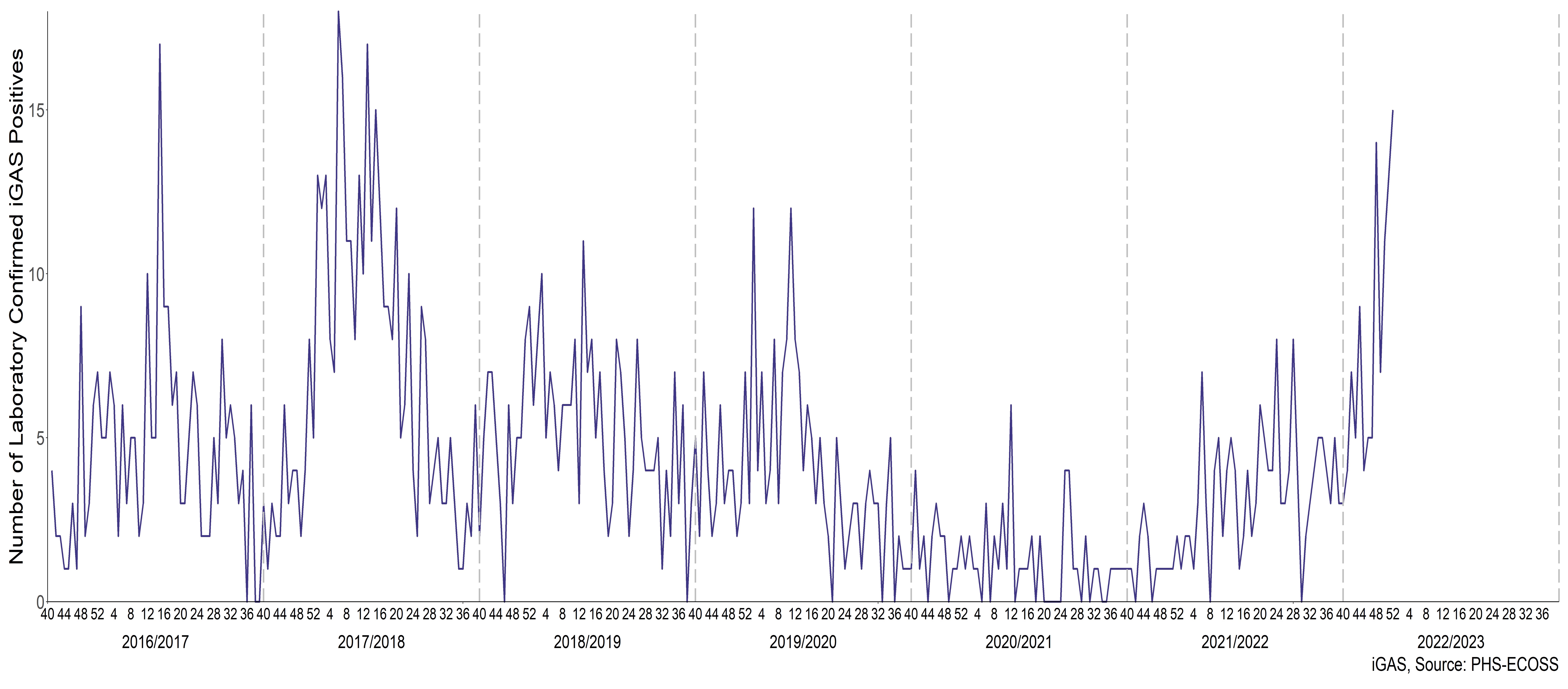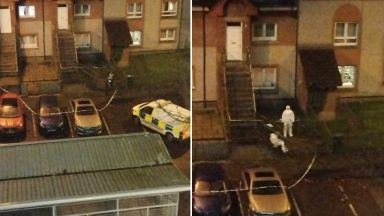Two Scottish children under the age of ten have died after contracting Strep A amid an unusual surge in cases.
Public Health Scotland confirmed that seven people had died among invasive Group A Streptococcus cases between October 3 and Christmas.
All but one of the country’s 14 health boards have reported infections. Overall numbers are well beyond those seen in previous years.
The deaths of 21 children under 18 have already been confirmed in England.
In the week up to Christmas, there were around three times as many scarlet fever cases compared with the same time in previous years.
Data from the beginning of October to 25 December 25 show that Public Health Scotland (PHS) has received reports of 20 invasive Group A Streptococcus (iGAS) cases in children under ten years, an increase of seven since the last report.
 PHS
PHSIt comes after the Scottish Government issued a supply alert notice this month for the antibiotics used to treat the Strep A bacterial infection after a surge in cases
Pharmacists have been warned that a serious increase in demand for the medications may mean they are “temporarily in limited supply at certain wholesalers and pharmacies”.
The public has been advised to be alert for symptoms of illnesses caused by Group A streptococcus and contact their GP or out-of-hours doctor to help stop an infection becoming serious.
Pharmacists are being urged to consider alternative antibiotics.
An update from Public Health Scotland said: “PHS is aware of seven deaths amongst iGAS cases that appear to meet the case definition between October 3 and December 25, 2022, two of whom were in children under ten years of age.
“This compares with between zero and seven deaths reported during the same time period of previous years.”
Scotland’s health secretary Humza Yousaf said the NHS was facing one of the toughest winters in its 74-year history with flu and Strep A cases on the rise.
“Every death is a tragedy, particularly those of young children, my thoughts with families & loved ones affected,” he said.
“Thankfully most cases of Strep A present as mild illness and can be treated with antibiotics. Working with UK Govt to ensure adequate supplies.
“Where localised shortages of first line treatments occur there are alternative and effective antibiotics available.”
Yousaf responded to the latest figures showing NHS Scotland had recorded its worst ever emergency department waiting times with just over half of patients seen within the four hour target set by the Scottish Government.
“The statistics are for one of the coldest periods for many years which put an increasing strain on the NHS,” he said.
“On top of that flu has been classified at extraordinary levels, with cases admitted to hospital the highest in five years.
“We also had to deal with rising cases of Strep A and other respiratory viruses which has resulted in significant demand on services.
“Covid has clearly still not gone away and these pressures, combined with pandemic backlogs, are making it a very challenging time for the NHS.”
What is Strep A and what symptoms should parents look for?
Strep A bacteria can cause many different infections, ranging from minor illnesses to serious and deadly diseases.
The bacteria are commonly found in the throat and on the skin, and some people have no symptoms.
Infections cause by Strep A include the skin infection impetigo, scarlet fever and strep throat. Scarlet fever in particular has seen a recent surge in cases.
While the vast majority of infections are relatively mild, sometimes the bacteria cause life-threatening illness called invasive Group A Streptococcal disease.
READ MORE: What is Strep A and what symptoms should parents look for?
Follow STV News on WhatsApp
Scan the QR code on your mobile device for all the latest news from around the country


 iStock
iStock

























